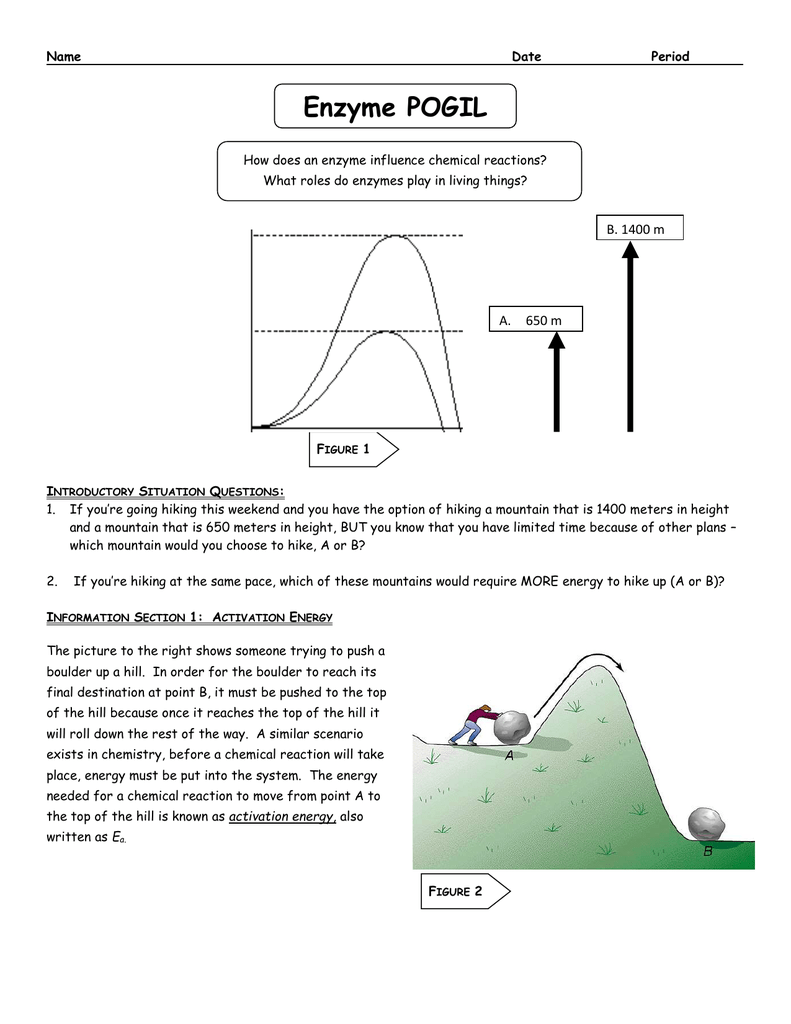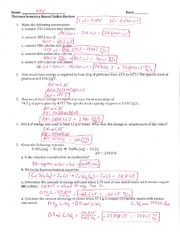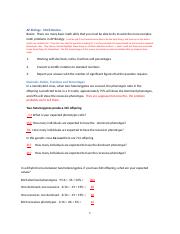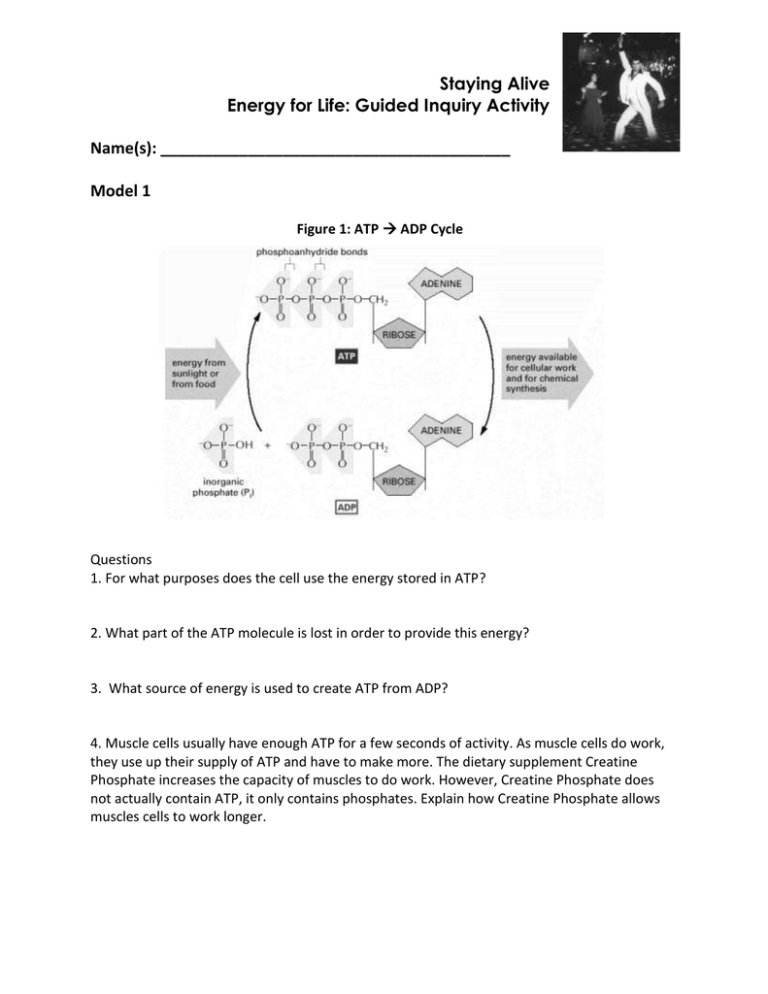Pogil Enzymes And Cellular Regulation
Enzymes and Cellular Regulation: Exploring the Key Concepts
Enzymes play a crucial role in cellular respiration, the process through which cells generate energy from organic molecules. Understanding how enzymes regulate cellular functions is essential for comprehending the intricate mechanisms underlying life. In this post, we'll dive into the fascinating world of enzymes and explore the concept of cellular regulation. We'll also provide you with a comprehensive overview of the Pogil answer key for Enzymes and Cellular Regulation, shedding light on the subject with easy-to-understand explanations and visuals.
1. The Role of Enzymes in Cellular Respiration

Enzymes act as catalysts in cellular respiration, accelerating biochemical reactions to enable cells to efficiently produce energy. They speed up reactions by lowering the activation energy required for the reaction to proceed. Without enzymes, the chemical reactions within cells would occur too slowly, making life as we know it impossible.
Enzymes involved in cellular respiration are typically organized into metabolic pathways, each with its specific function. These pathways include glycolysis, the Krebs cycle, and oxidative phosphorylation. Each step in these pathways is mediated by a specific enzyme, ensuring the smooth progression of energy production within the cell.
Enzymes involved in cellular respiration are tightly regulated to maintain the delicate balance necessary for optimal functioning. Cellular regulation helps ensure that energy production matches the cellular demands, preventing the wasteful utilization of resources and maintaining homeostasis.
2. Understanding Enzyme Regulation
Enzyme regulation ensures that metabolic processes occur at the desired rate to meet cellular demands while avoiding unnecessary energy expenditure. Such regulation occurs through various mechanisms, including feedback inhibition, allosteric regulation, competitive inhibition, and covalent modification.
Feedback inhibition, also known as end-product inhibition, is a mechanism in which the final product of a metabolic pathway acts as a feedback inhibitor for an earlier enzyme in the pathway. By inhibiting the enzyme's activity, the final product prevents the overproduction of metabolites.
Allosteric regulation involves the binding of regulatory molecules to allosteric sites on enzymes. These regulatory molecules can activate or inhibit enzyme activity, depending on the specific metabolic requirements.
Competitive inhibition occurs when a molecule, analogous to the enzyme's substrate, competes for the active site on enzymes. This competition reduces the efficiency of the enzyme and slows down the reaction rate, leading to the regulation of metabolic pathways.
Covalent modification, such as phosphorylation and dephosphorylation, provides a reversible method of enzyme regulation. Addition or removal of phosphate groups can activate or deactivate enzymes, respectively, allowing for rapid responses to changing cellular conditions.
3. Exploring the Pogil Answer Key: Enzymes and Cellular Regulation
The Pogil Answer Key for Enzymes and Cellular Regulation is a valuable resource for students and educators alike. It provides comprehensive explanations and answers to the challenging questions posed in the Pogil activity, aiding in a deeper understanding of the topic.
The answer key offers step-by-step explanations for each question in the activity, allowing students to follow along and learn at their own pace. It also provides additional insights and clarifications, ensuring that students grasp the underlying concepts behind enzyme regulation and cellular respiration.
Accompanying the answer key are visually appealing illustrations and diagrams that enhance comprehension. These visual aids help students visualize the concepts, making them more memorable and easier to understand.
FAQs
1. Why are enzymes important in cellular respiration?
Enzymes are crucial in cellular respiration because they act as catalysts, speeding up the biochemical reactions involved in energy production. Without enzymes, these reactions would occur too slowly to sustain life.
2. How are enzymes regulated in metabolic pathways?
Enzymes are regulated in metabolic pathways through mechanisms such as feedback inhibition, allosteric regulation, competitive inhibition, and covalent modification. These regulations ensure that metabolic processes occur at the desired rate based on the cellular demands.
3. How can the Pogil Answer Key for Enzymes and Cellular Regulation help students?
The Pogil Answer Key for Enzymes and Cellular Regulation provides comprehensive explanations and answers to the challenging questions posed in the activity. It aids students in understanding enzyme regulation and cellular respiration, helping them grasp the underlying concepts more effectively.
By using the Pogil Answer Key as a reference, students can deepen their knowledge and enhance their learning experience. It serves as a valuable tool for educators as well, assisting in lesson planning and facilitating classroom discussions on the topic.
Whether you're a student trying to comprehend the complexities of enzyme regulation or an educator seeking additional resources for your curriculum, the Pogil answer key for Enzymes and Cellular Regulation is an excellent companion on your journey towards mastering this fundamental aspect of biology.
Remember, enzymes and cellular regulation are central to understanding the intricate mechanisms of life. By delving deeper into this subject, you'll gain a clearer perspective on the fascinating world of cellular respiration and its essential role in sustaining life.
Enzyme Pogil Answer Key - Monster Pdf
 Image Source : monsterpdf.blogspot.com
Image Source : monsterpdf.blogspot.com pogil enzyme
Cellular Respiration Pogil Answer Key / Enzymes And Cellular Regulation
 Image Source : khloehiggins.blogspot.com
Image Source : khloehiggins.blogspot.com respiration cellular pogil photosynthesis coursehero enzymes require period might
Neuron Function Pogil Answer Key - Pogil Answer Key Ap Biology Membrane
 Image Source : thepicturesscoop.blogspot.com
Image Source : thepicturesscoop.blogspot.com Enzymes And Cellular Regulation POGIL.pdf - Es And Cellular Regulation
 Image Source : www.coursehero.com
Image Source : www.coursehero.com cellular regulation enzymes pogil pdf es
Enzyme And Cellular Regulation Pogil - Enzymes And Cellular Regulation
 Image Source : www.coursehero.com
Image Source : www.coursehero.com cellular regulation pogil enzyme enzymes
Pogil Answer Key Cellular Respiration - Respiration And Photosynthesis
 Image Source : equiponoasantillana.blogspot.com
Image Source : equiponoasantillana.blogspot.com respiration cellular pogil photosynthesis studylib s2 molecule
Pogil Answer Key Cellular Respiration : Enzyme And Cellular Regulation
 Image Source : cuckoldblog40.blogspot.com
Image Source : cuckoldblog40.blogspot.com pogil cellular respiration coursehero enzymes glycolysis regulation enzyme
Cellular Respiration Pogil Answer Key / Enzymes And Cellular Regulation
 Image Source : khloehiggins.blogspot.com
Image Source : khloehiggins.blogspot.com cellular
Pogil cellular respiration coursehero enzymes glycolysis regulation enzyme. Respiration cellular pogil photosynthesis studylib s2 molecule. Cellular regulation pogil enzyme enzymes. Pogil answer key cellular respiration : enzyme and cellular regulation. Pogil enzyme